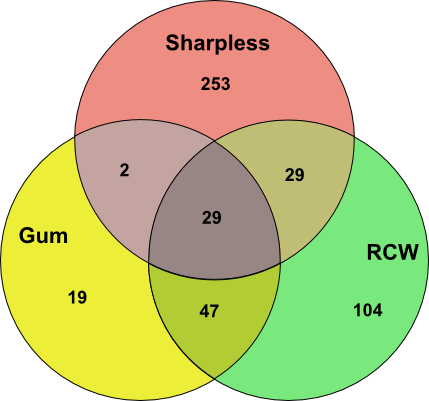Eight years ago I started work on a commentary on the Sharpless nebula catalog and eventually expanded to the Gum and RCW catalogs as well. Together these catalogs cover almost all of the prominent emission nebulae of the Milky Way visible in hydrogen-alpha. (These catalogs overlook a few fainter large objects and miss many smaller objects. There are other catalogs describing smaller emission nebulae such as the BFS and Bran catalogs. At some point I will look at these.)
It took me longer than expected but today the Sharpless, Gum and RCW commentaries are complete. Over the years the database and Python code I was using to present the commentaries became bitrotted so now I am using a new Haskell-based system to generate static pages from an off-line database. The resulting pages display faster and more reliably.
I have used the new Haskell-based system to improve the format of the commentaries. There are now proper Wikipedia-style footnotes, links to each nebula in the Milky Way Explorer, and a selection of distance estimates from the scientific literature instead of a single estimate. I have updated the commentaries to use the latest research and to improve the images. Of course, updating the commentaries will be an ongoing task.
There are a total of 313 Sharpless objects, 209 RCW objects and 97 Gum objects. There are more objects in the RCW and Gum catalogs than catalog numbers because both of these catalogs describe subnebulae (for RCW in the notes and for Gum in the main catalog). Sometimes these subnebulae identify the brightest parts of a larger object, but often they identify separate objects.
There is considerable overlap between the three catalogs as this Venn diagram shows:

Because of the overlaps, there are 483 distinct objects in the three catalogs. There are actually fewer nebulae than this, because some catalog entries simply designate nebulous regions that contain separate objects described in other catalogs, and in the case of the RCW catalog, there appear to be a number of objects that are unidentifiable or simply do not exist. More details can be found in the commentaries.
